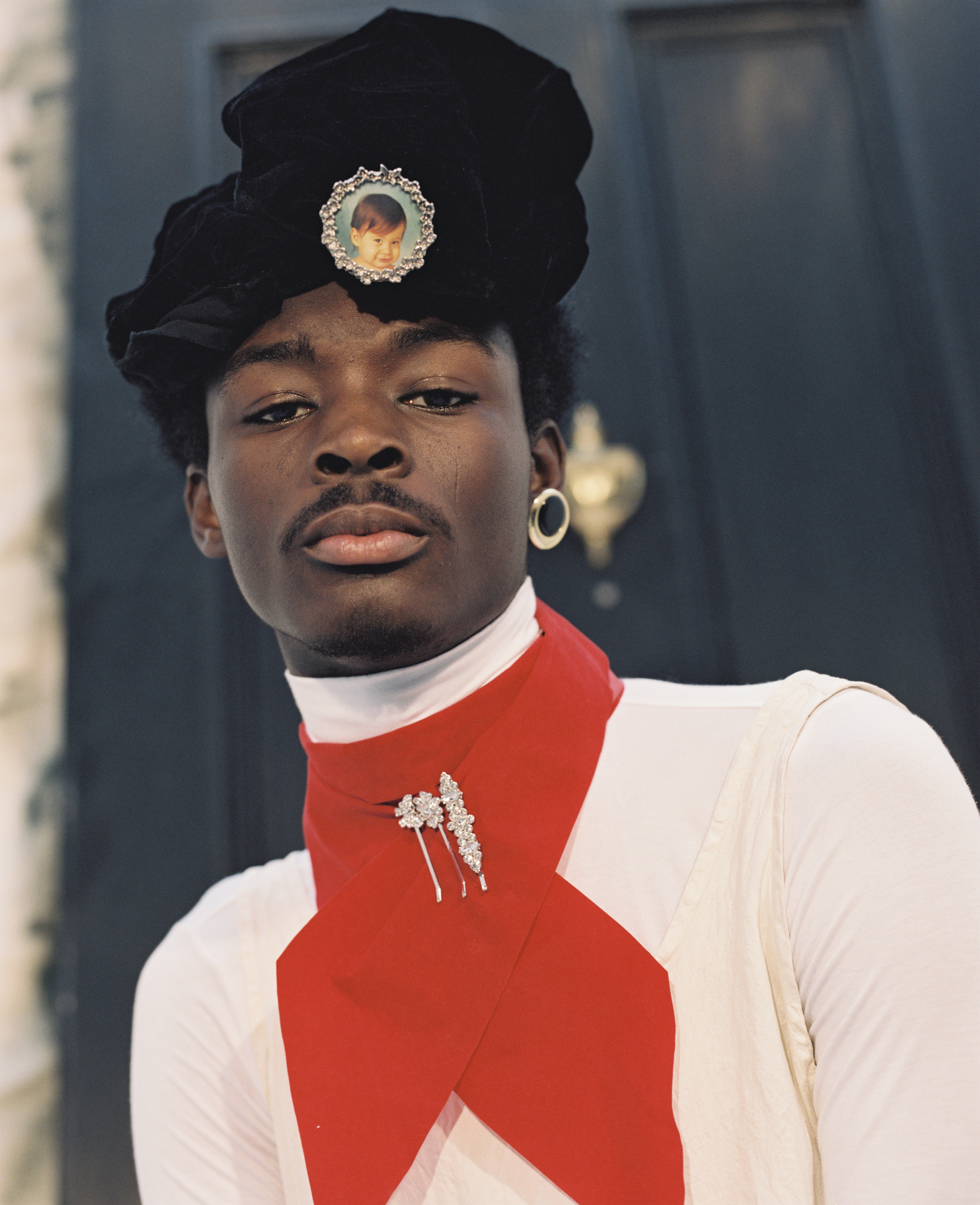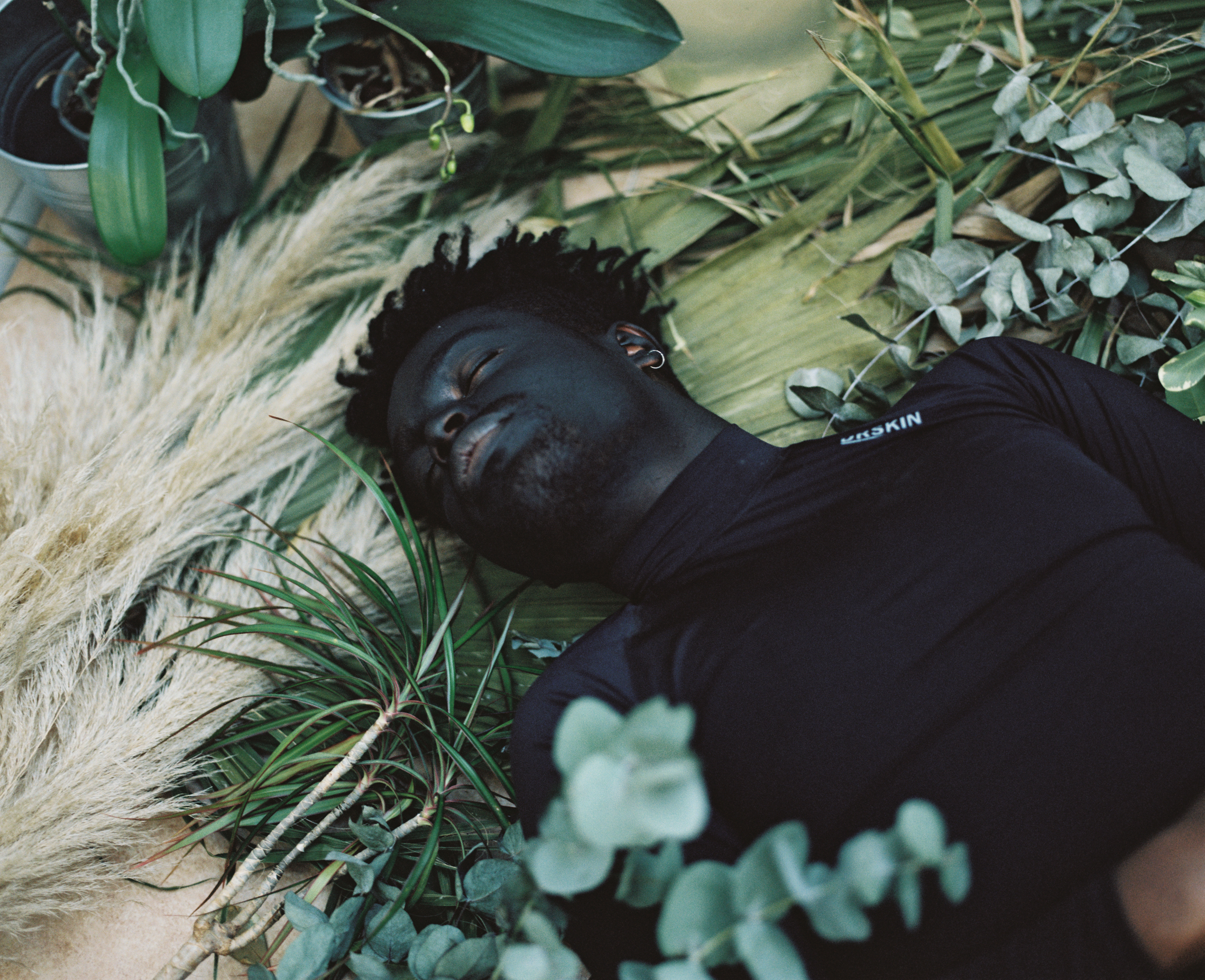Campbell Addy is a 23-year-old British-Ghanaian photographer currently studying at Central Saint Martins. I first met Campbell for a shoot for his upcoming print publication Niijournal that will be launching on May 10.
We spoke about a lot of things during our interview; from the first black man who could vote in England – back in the 18th century by the way – to Azealia Banks’s antics and the legacy of Nina Simone.
Niijournal is a lot of things, but his tagline is ‘here to educate not irritate’. Here’s how Nii started and why it’s so much more than another independent print publication.
How did Niijournal come about?
On our course [fashion communication] we have a year out in industry. After two years of theory, you go out into the big wide world. I worked at SHOWstudio and work with the design team where I learned a lot of technical skills, however I didn’t feel a great connect to the work being created.
Prior to Central Saint Martins my interests weren’t routed in fashion as much as it is today, more so fine art. I decided to do fashion communication because it was still visual. I always found a disconnect in the way I approached fashion: not that it’s frivolous or anything but I just felt like there’s more to me than the surface.
After that I worked with Jamie Morgan who’s the infamous Buffalo photographer. A lot of his work is about the pushing of ideas. Back in the day wasn’t just pretty faces, it was boys in skirts and women as men. There was always something: it was always flipping and subverting things.
It really clicked: that was the sort of imagery I wanted to make imagery that gets you thinking. Then I went back to Ghana where my mum lives to get out of London and experience a new environment. I took my little 35mm camera, I didn’t think about what I was going to shoot before. I just took pictures that I liked.
My mum had a miscarriage at the time. So it was a really emotional time; it wasn’t like I was just going to Ghana for a holiday.
I was in quite a headspace where I was just happy to be alive, happy to have a roof over my head. It kind of took me back to square one.
I came back and I thought I need to do something with these images. Initially I wanted to make a zine, but then that doesn’t do it justice. I decided to hold onto the images and see what I could do. My mum told me to ‘just bide your time with these.’
How did visiting America influence your work?
I became more aware of things, by just living, being conscious. I went to New York and it blew my mind, it’s truly a different world to that in London. I went to a festival in Harlem where I saw a parade of people marching in memory of the black lives lost that year, it shook me to my core to see so many young lives lost in the ‘land of the free’.
With all the things I experienced during my year out, I couldn’t return to university and create just a fashion magazine as I initially intended. First it was going to be about black people, then I thought it’s going to be about awareness and educating people.
As a kid I had all these pent-up issues but no vocabulary to express it.
It really resonated with me that Nina Simone sang Mississippi Goddam at the end of the Selma marches and her voice broke. That was how I was feeling. As a kid I had all these pent-up issues but no vocabulary to express it and with imagery it’s so hard to express something you don’t even understand. If you create work, it’s needs to be justified not knowing why you’ve created something isn’t good enough, especially whilst studying.
I then decided to do my dissertation on the representation of the black British male. What affects us in the UK is hidden under layers and layers of institutionalised racism. People don’t realise how bad it is here. I read a book called Black Britain by Chris Mullard that had me crying. It’s about Mullard’s life story, from his upbringing in Hampshire, to moving to London during the 50s.
When he came to London all the race issues surfaced. He had to play up to the race card, make jokes… He was literally writing my childhood experiences. And it was so weird: how can a man 50 years older than me have the same exact life story?
I’d be talking to my friends in New York and Brooklyn having the same issues as my cousins in Ghana and my cousins over here in London. This is not just a personal issue, it is a worldwide issue, and that’s how Nii came about.
There are magazines that feature 99 per cent white faces and it’s just a magazine.
I want Niijournal to be consider the norm. I don’t want it to just be a black magazine. It’s a magazine that happens to feature eighty per cent black people. There are magazines that feature 99 per cent white faces and it’s just a magazine.
Nii means King; it’s my middle name, one of three. I used to be ashamed to tell people my middle names because it was so long. Now I’m like no. Why can I not be proud to have an African name?
My sister is six and my cousin’s 13 and 16, I want them to be able to pick up Nii and relate to it. Growing up was difficult as I was often unable to relate to work found in magazine resulting in confused identity and having to assimilate to something else.
There was controversy over an image Afropunk featured of yours. Do you think Nii will face a similar backlash?
Anything that’s questioning the status quo, questioning the status of the world we live in, being the western world, is going to experience backlash. Whether it’ll be as open as it was on Afropunk who knows?
The image wasn’t even sexualised, in order to sexualise and image you need to project your own views of sexuality. When creating the image with Ib Kamara, we weren’t thinking along those lines at all. People were irked because it wasn’t something they’d usually come across. There was a lot of talk that we were pushing the white agenda to get rid of black masculinity. The people commenting, in my eyes, were looking at the image of a black man from Western construct. The western world has done a great job in conditioning us into believing what it means to be a man.
So portraying a black man in the way we did on Afropunk caused a rift in their conditioned minds.
The western world has told us what masculinity should be.
I went to Ghana I was flabbergasted: there was a man holding another man’s hand. I asked my mum if they were gay and my mum laughed at me, because even though she was born in the UK, she’d been in Ghana for a while. She’d obviously got rid of that western construct and knew it was a show of affection. Everyone holds hand because that’s how it is.
The western world has told us what masculinity should be and we’ve forgotten what it is. Masculinity isn’t about who can hit harder; it’s just you being a man. And whichever way you want to be a man, that’s masculinity. And the same with femininity, some women are so much more robust and aggressive, they’re still a feminine woman. Just because they don’t wear flowers doesn’t mean they’re not women.
Tell us a bit about the contributors you’ve got in Nii.
We’re in the age of the internet so I’ve tried to get a variety of people from around the world. We have Katrice Dustin from Canada who’s an amazing poet and we’ve got some work from artist Devin N Morris from Baltimore.
In the age of the internet I can contact your cousin in South Sudan if I wanted to and we as a people need to tap into that.
We have fewer resources simply because we’re black. The door is further away. That’s the honest truth but that doesn’t mean it’s less attainable. Don’t wait for the door to open for you, one thing that Central Saint Martins has taught me is to make your opportunities, its about ideas and pursuing them. That’s what I’m trying to do with Niijournal. I want it to be a positive example that young black people can do anything, utilise the internet and collaborate.
Follow Campbell on Instagram @campbelladdy
Check out more at niijournal.com






